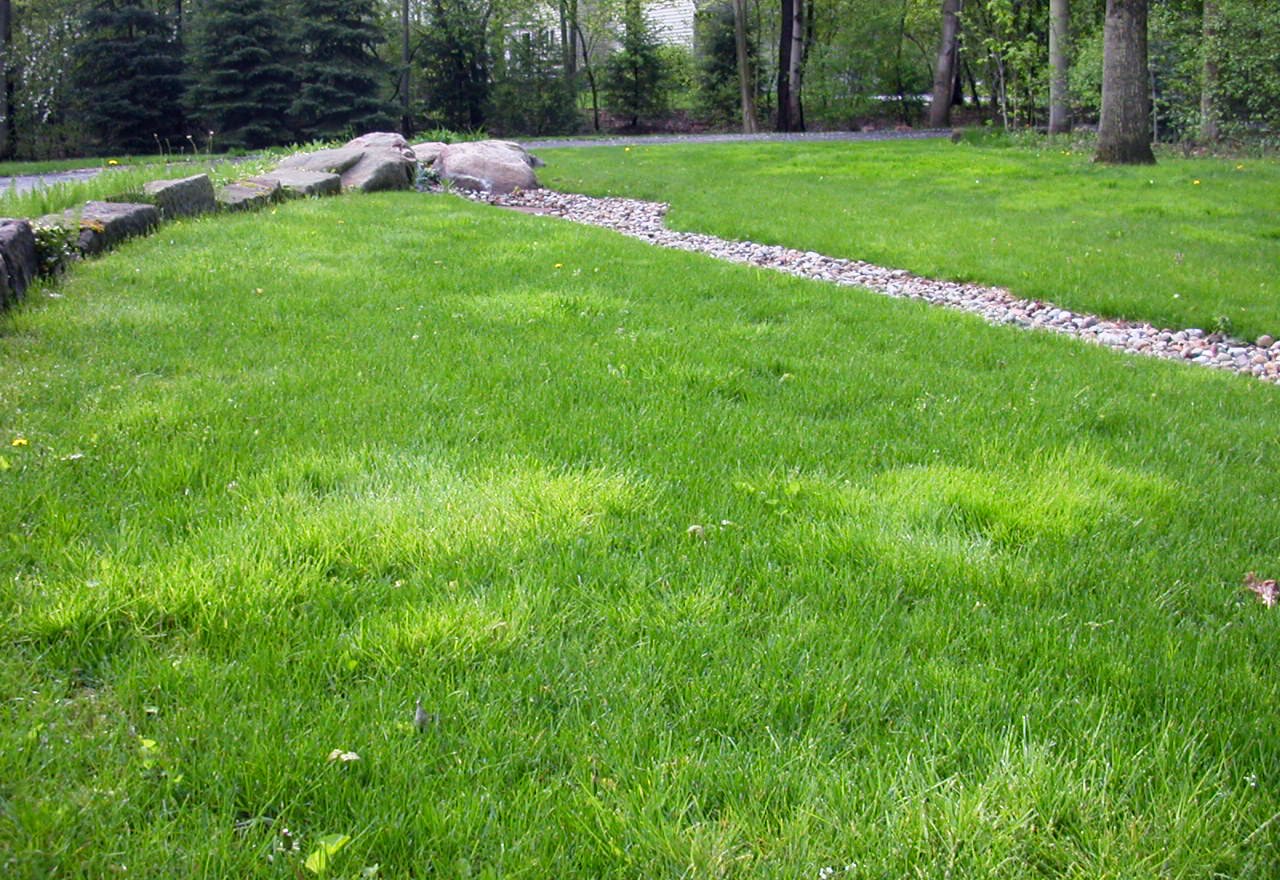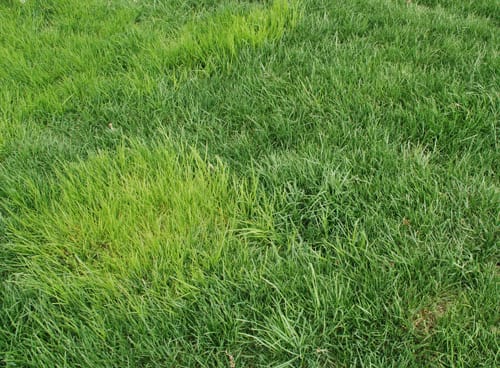This Cool Season Grass Turns Brown and Looks Dead in Warm Weather

Rough Bluegrass, Poa trivialis, is a cool-season grass that does well in damp, shady areas. Consequently, it thrives in cool, wet Spring conditions, but turns brown (and plays dead) as soon as the weather gets warm in the Midwest. Rough Bluegrass is also sometimes called roughstalk or rough meadow grass and although it is a grass, it’s frequently considered a lawn weed. The grass itself is finer and a lighter green than most lawn grasses but is still often mistaken for Kentucky Bluegrass or Bentgrass. The individual blades of Rough Bluegrass have a tendency to all distinctively lie flat in the same direction or fall over. Its soft blades are glossy on the underside, and the top has a signature middle midrib or fold. The grass spreads by stolons, not rhizomes like most cool season lawn grasses. It has a very low tolerance for traffic and can be invasive in the right conditions by “creeping” with its shallow stolons like Zoysia Grass, another common lawn issue.
Rough Bluegrass has recently become a big issue in lawns for two reasons. First, as an environmental initiative, grass seed producers are no longer allowed to burn their fields. Because of this, seed producers collect more Rough Bluegrass seed every year. Secondly, Rough Bluegrass seed is very similar in size, shape, and weight to Kentucky Bluegrass. Due to their similarities, seed sorting equipment has a difficult time distinguishing between the two. Therefore, Rough Bluegrass appears frequently in Kentucky Bluegrass mixes unintentionally. Additionally, small patches of Rough Bluegrass are not as easy to spot in lawns. They become larger each year until their difference in texture and color are more noticeable.
There is no one herbicide (natural or otherwise) that will kill Rough Bluegrass alone or selectively. Therefore, if you spray any sort of weed killer on patches of Rough Bluegrass, you will also be killing any adjacent desirable grass. RoundUp (glyphosate) – which we generally do not recommend – will kill it but will also kill your other grass.
If you have small patches of Rough Bluegrass, we recommend manually digging it up and reseeding. Because it spreads by stolons, Rough Bluegrass doesn’t have very deep roots so this job isn’t so taxing. If it’s early Spring, you will have an easier time using a garden rake with sturdy tines that will catch the stolons that grow horizontally, pulling them out of moist soil.
When replanting your lawn, our general recommendation for healthy grass is a mix of 5% Microclover, 90% Turf Type Tall Fescue, and 5% Kentucky Bluegrass for our Midwest region of the United States. We sell a premade mix at our Good Nature Organic Lawn Care Shop: our Tuff Turf Lawn Seed provides the Turf Type Tall Fescue and Kentucky Bluegrass and we also sell bags of Microclover that you can mix in. Microclover is a legume that will feed your soil and stay green the entire Summer. This variety of Microclover is smaller and does not flower so it will blend into your lawn well.
If you’re dealing with a great deal of Rough Bluegrass (more than half of your lawn), you probably want to consider a complete Lawn Renovation or reseeding the entire space. After Renovating, you can keep Rough Bluegrass from returning by seeding with a mixture that doesn’t have a lot of Kentucky Bluegrass in it, reducing the risk of exposing your new lawn to the same issue.
Our general healthy lawn recommendations of mowing high (3.5 to 4.5 inches) and watering infrequently will also help keep Rough Bluegrass at bay. This will keep your soil healthy and your desirable grass thriving which will outcompete Rough Bluegrass which will wilt later in the Summer. Rough Bluegrass is very drought intolerant so it will not thrive in an infrequently watered environment. You want the rest of your grass to outcompete Rough Bluegrass during the later Summer.
Sometimes, golf courses will plant Rough Bluegrass in low-traffic areas that are shady and wet in portions of the United States. In the same way, sometimes it is also intentionally mixed into sports field turf because Rough Bluegrass transitions into a bright green earlier in the spring and spreads easily at lower temperatures. It also outcompetes other weeds that are harder to deal with.
